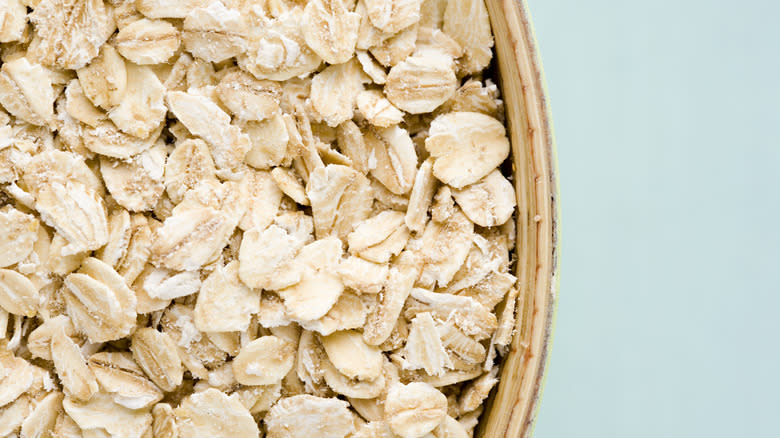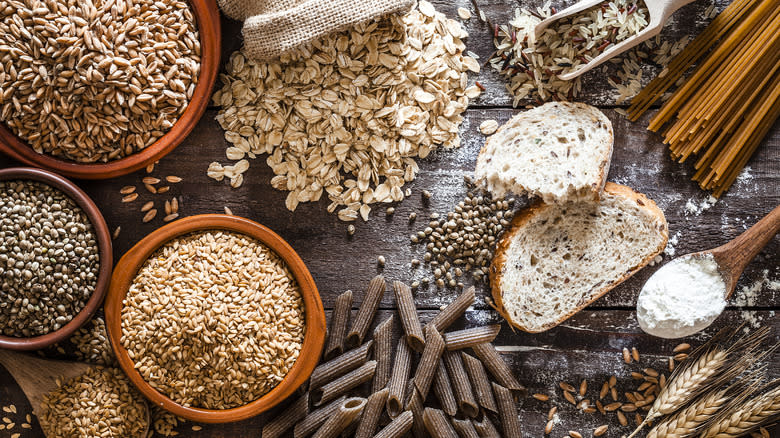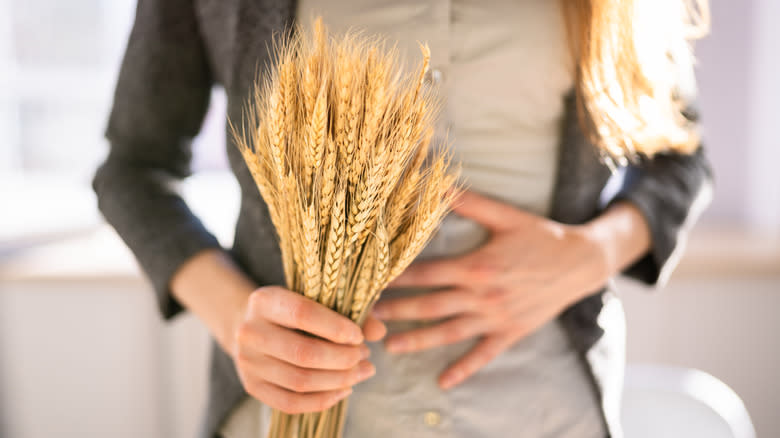Are Oats Considered Gluten-Free?

Whether you have celiac disease, a gluten intolerance, or are simply trying to eat gluten-free, it's essential to understand which food groups contain gluten, especially if you're eyeing that big bowl of savory oatmeal for your next breakfast. This protein is primarily found in cereal grains but not in everything you might identify as a grain. While wheat grains contain abundant gluten, others — like rice and corn — don't contain any. You can include oats on the list of gluten-free grains with a few caveats.
Naturally, oats are entirely devoid of gluten. However, oats have ample opportunities to pick up gluten cross-contamination between the field and the store. Both farming and manufacturing practices have the potential to introduce gluten during oat production. So, while oats are naturally gluten-free, they may pick up trace amounts of the protein, and those who monitor their gluten intake should be aware of the contamination potential.
Read more: What These Imitation Foods Are Actually Made Of
Contamination Can Sometimes Occur

Due to the industrial manufacturing practices of the modern food system, oats — which generally contain no gluten — may pick up the protein from an adjacent grain being processed in the same facility. Manufacturing centers built to handle oats also sort and package other grains that contain gluten, like wheat and rye. Because these grains are often milled into a very fine powder, they can easily get airborne and enter the oat production process. Similar cross-contamination can occur in the fields, where oats are often grown alongside gluten grains.
Luckily, most cross-contamination occurs in tiny quantities that are not enough to strip a product of its gluten-free label. The FDA dictates that for a package of oats to be labeled gluten-free, it must "contain less than 20 parts per million (ppm) of gluten" and notes that this figure is "the lowest that can be reliably detected in foods using scientifically validated analytical methods." So, while cross-contamination certainly occurs, oats with gluten-free labels are generally safe for most people with gluten intolerance.
Even though oats don't have gluten, they carry a protein called avenin, which triggers a "wheat-like inflammatory response" for a subset of those with celiac disease. However, for the vast majority of those with celiac or gluten intolerance, oats are perfectly fine to eat.
What Is Gluten?

According to a study conducted by the University of Nebraska, up to 25% of Americans try to adhere to a gluten-free diet. So, what is this substance that everyone is trying to avoid? Except for this gluten-free flour that is somehow still made with wheat, gluten is a protein found in almost all kinds of wheat, barley, and rye. This means it appears in loads of common food items, from bread and pasta to beer and salad dressing. In plants, gluten is primarily used to help a plant develop from seed to seedling. In the kitchen, gluten is the agent that helps dough rise.
Intolerance to this molecule is fairly widespread. According to the Cleveland Clinic, 6% of the American population has an issue with gluten, and 1% has an immune reaction to it, called celiac disease. While celiac disease comes with a host of serious complications, gluten intolerance can lead to everything from abdominal pain to depression. Luckily, while gluten-intolerant people must steer clear of most grains, they can still chow down on a piping-hot bowl of baked cinnamon oatmeal.
Read the original article on Daily Meal.

